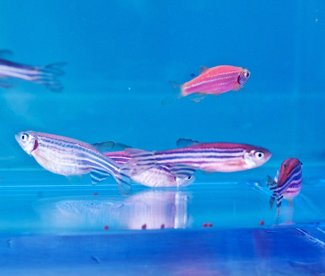Fish hold key to healing spinal cord repair

THE SMALL FRESHWATER ZEBRAFISH could provide the key to healing spinal cord injuries in humans, according to new research.
Unlike mammals, who never fully recover from spinal injuries, zebrafish can completely heal within two months.
“This may lead, in the future, to developing a therapeutic approach [to healing paralysis] in humans,” says neuroscientist Dr Yona Goldshmit, lead author of the study at Monash University in Melbourne.
Healing the spinal cord
After sustaining a spinal injury, our immune system kicks in and cells work to stop the bleeding – developing scar tissue in the process. It’s the scar tissue that causes the biggest road block for spinal cord healing, as nerve cells can’t grow through it.
Yona says zebrafish are special because they are able to form a kind of bridge across the injury that allows nerves to regrow to and from the brain.
Bridging protein the key to healing spinal injury?
The spinal-cord healing ability of zebrafish has been known since the late 1990s, says Yona, and other types of fish have also been found to regenerate, such as trout and goldfish. However, this study reveals more about the role of a protein, called fibroblast growth factor (FGF), in controlling the shape of the cells forming the bridge, she said.
Although mammals have the same bridging cells, they also release other factors during injury whose effects counteract the healing process.
“A spinal cord injury is like dropping an atom bomb on a city…the damages are so enormous that all the good things that are happening are minor,” says Yona.
Mice spinal cord trials “promising”
Yona and her team are now testing whether FGF has the same effects on mice by injecting the protein into the wound site. So far the results are promising, she says.
Assistant Professor Melinda Fitzgerald a cell biologist at The University of Western Australia says while the study is an important step forward, it’s still in the early stages of research.
“It is a significant result – it has great potential. And if the results translate into rodent and primate models then they could be translated into the clinic,” she said.
Testing on rodents is “the obvious next step”, says Melinda, but “again, the mice have different response characteristics to humans.”
Melinda says it is could be years before we can expect to see it applied to humans.
The findings were reported last week in The Journal of Neuroscience.
RELATED STORIES

